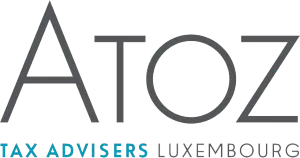- within Technology and Finance and Banking topic(s)
- with readers working within the Aerospace & Defence industries
OUR INSIGHTS AT A GLANCE
- On 28 July 2021, the Luxembourg tax authorities issued a Circular in order to provide guidance on the interpretation of the interest deduction limitation rules laid down in Article 168bis of the Luxembourg income tax law (through which the EU Directive laying down rules against tax avoidance practices ("ATAD 1") has been transposed into Luxembourg law). The Circular extends and replaces the former Circulars dated 8 January 2021 (see https://www.atoz.lu/media/insights-march-2021) and 2 June 2021.
- The interest deduction limitation rules limit the interest deductibility for tax purposes for Luxembourg corporate taxpayers and Luxembourg permanent establishments of foreign taxpayers, unless they qualify as financial undertakings or stand-alone entities. The limitation applies to exceeding borrowing costs (i.e., the amount by which the borrowing costs exceed the interest income in a given year) and corresponds to the higher of EUR 3 million or 30% of the tax EBITDA per fiscal year.
- Exceeding borrowing costs remain fully deductible if the equity over total assets ratio of the Luxembourg taxpayer is (broadly) equal to or higher than the equivalent group ratio ("Group Escape Clause").
Background
On 28 July 2021, the Luxembourg tax authorities issued Circular n°168bis/1 (the "Circular") in order to provide guidance on the interpretation of the interest deduction limitation rules ("IDLR") laid down in Article 168bis of the Luxembourg income tax law ("LITL") (through which the Council Directive (EU) 2016/1164 of 12 July 2016 laying down rules against tax avoidance practices ("ATAD 1") has been transposed into Luxembourg law).
The Circular replaces the Circular dated 2 June 2021, which previously extended and replaced the Circular dated 8 January 2021 to provide clarifications in relation to the Group Escape Clause laid down in article 168bis §6 of the Luxembourg Income Tax Law.
While the Circular of 2 June 2021 clarifies the conditions to be met in order to benefit from the Group Escape Clause for Luxembourg taxpayers who do not belong to a fiscal unity, the new Circular of 28 July 2021 includes some additional developments on how to apply the Group Escape Clause in case of a fiscal unity which will only be briefly outlined below. The IDLR have been applicable since 1 January 2019 and shall be interpreted according to the Circular for all tax years from 2019 (the Circular merely has clarifying character with regard to the interpretation of the existing legal provisions).
The IDLR limit the interest deductibility for tax purposes for Luxembourg corporate taxpayers and Luxembourg permanent establishments of foreign taxpayers, unless they qualify as financial undertakings or stand-alone entities. The limitation applies to exceeding borrowing costs (i.e., the amount by which the borrowing costs exceed the interest income in a given year) and corresponds to the higher of EUR 3 million or 30% of the tax EBITDA per fiscal year.
In a fiscal unity, the IDLR are, by default, applicable for the entire group of fiscally integrated Luxembourg companies. Upon request, the IDLR may also be applied at the level of each member of the fiscal unity.
The IDLR provisions in Luxembourg tax law include a number of definitions which are core to the practical application of the limitations for taxpayers. Their interpretation has been the subject of multiple discussions in the past years.
Based on the Group Escape Clause, upon request, exceeding borrowing costs remain fully deductible if the equity over total assets ratio of the Luxembourg taxpayer is (broadly) equal to or higher than the equivalent group ratio (a tolerance of two percentage points below the equivalent group ratio is permissible).
This article provides an overview of the key aspects of the Circular.
Conditions to be fulfilled
The Group Escape Clause goes beyond a mere comparison of the equity over total asset ratios and requires a number of conditions to be fulfilled.
The Luxembourg taxpayer requesting to benefit from the Group Escape Clause must be a member of a consolidated group for financial accounting purposes (due to a legal obligation or on a voluntary basis). A fiscal unity is not required in this context. However, in case of a fiscal unity with application of the interest limitation rules at the level of the fiscal unity (i.e. not at the level of each integrated company), each of the Luxembourg integrated companies must be consolidated for financial accounting purposes. In such case, the request to benefit from the Group Escape Clause has to be made by the integrating company.
If several consolidated accounts exist, only those of the ultimate consolidating entity serve as a basis for the Group Escape Clause. The same applies in case of a voluntary consolidation (here, the entity which would have been the ultimate consolidating entity based on the applicable legislation in that country is to be considered).
The consolidated accounts have to be prepared on the basis of the full consolidation method (line-by-line) for financial accounting purposes. Other methods such as the proportionate consolidation and the equity method disqualify the taxpayer from the application of the Group Escape Clause.
The consolidated accounts have to be prepared under a recognised accounting standard of an EU member state, under IFRS (either as published by the IASB or as adapted to EU law) or another equivalent accounting standard (i.e., Japan, USA, the People's Republic of China, Canada or the Republic of Korea).
The consolidated accounts have to be audited by a licensed auditor under Luxembourg or equivalent norms of the ultimate consolidating entity in the frame of a statutory audit or a contractual audit, as long as the applicable auditing standards in the jurisdiction of the ultimate parent entity or under Luxembourg auditing standards are respected.
The statutory financial statements of the Luxembourg taxpayer requesting the benefit of the Group Escape Clause do not necessarily need to be prepared under the same accounting standard as the ultimate consolidating entity. However, in order to have the same basis as a comparison, a stand-alone version under the same accounting standards is required.
Adjustments to the consolidated accounts
Certain adjustments are required in order to achieve a comparability of the different sets of accounts.
All assets and liabilities have to be valued according to the same methods in the standalone accounts and in the consolidated accounts. The Circular requires the stand-alone accounts of the Luxembourg taxpayer to be adjusted if a different accounting standard is used for the consolidated accounts. In other words, this should not require an audit of the stand-alone accounts of the Luxembourg taxpayer under the accounting standards of the consolidated accounts.
Further, if the consolidated accounts comprise entities that are merely proportionately consolidated or on the basis of the equity method, such entities need to be excluded from the consolidated accounts by way of corresponding adjustments prior to the comparison of the equity over total asset ratios.
In a fiscal unity, the adjustments must, generally, be applied by analogy, in particular as to a coherent valuation method of assets and liabilities. In addition, all intra-group transactions between the members of the fiscal unity have to be eliminated.
The above modifications come with some practical problems and may be burdensome depending on the size of the group and the availability of all relevant information.
Documentation requirements
The benefit of the Group Escape Clause is subject to certain documentation requirements to be appended to the Luxembourg tax return of the respective taxpayer. Such documentation should comprise the following:
- Supporting evidence on all conditions with regard to the application of the Group Escape clause (including the nature of the integration, the firm in charge of auditing the accounts, confirmation that the taxpayer is fully integrated into the consolidated accounts, etc.);
- A detailed computation of the equity over total asset ratio at the level of the consolidated group and at the level of the relevant taxpayer (including details of the adjustments made, if any, and details of the equity and assets used for the computation).
These rules apply by analogy for a fiscal unity. Where the IDLR are applied at the fiscal unity level, the integrating company has to provide all the relevant information and details together with its tax returns.
The Luxembourg tax authorities may ask for additional information upon request.
The notion of "equity"
The Circular does not provide any explicit definition of the term equity (fonds propres) used in Article 168bis §6 LITL for the purpose of the Group Escape Clause and uses the French word "capitaux propres" interchangeably.
Absent any clarification, the notion of "equity" therefore tends to refer to the meaning of equity from an accounting perspective in the widest sense, i.e., including any equity accounts such as retained earnings and reserves. Since the basis of the comparison is the financial statements, the tax qualification of an instrument should be irrelevant.
Implications
Luxembourg taxpayers that potentially fall within the scope of the Group Escape Clause have to carefully review their financial accounting situations and compile all relevant information together with their tax returns.
The number of requirements and conditions to be fulfilled sets the bar quite high and underlines that the Group Escape Clause is clearly to be seen as an exceptional carve-out rule from the IDLR provisions.
The content of this article is intended to provide a general guide to the subject matter. Specialist advice should be sought about your specific circumstances.



